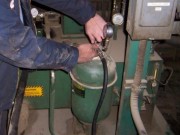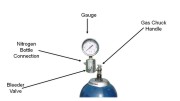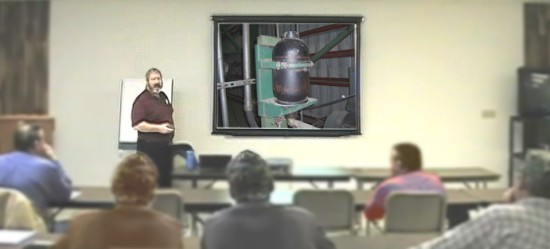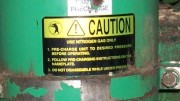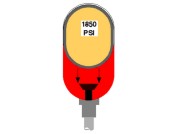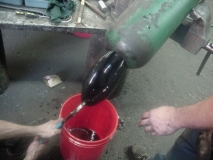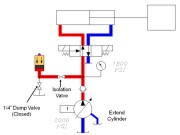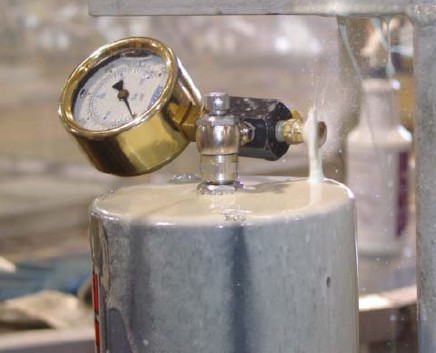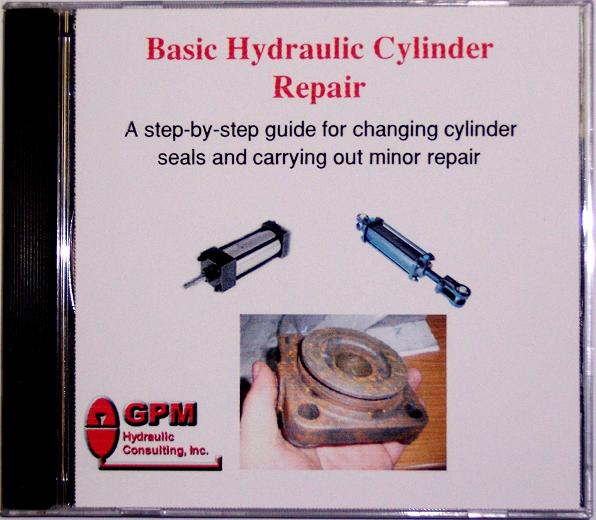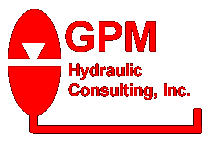
P.O. Box 1376
Monroe, GA 30656
(770) 267-3787 gpm@gpmhydraulic.com
For an archive of past newsletters, please visit:
http://www.GPMHydraulic.com/newsletter_archive/
CLICK HERE to send this newsletter to a friend!
|
'Troubleshooting Hydraulics' Newsletter |
||||
|
||||
|
In This Issue |
||||
1. How Long Should Hydraulic Hose Last? 2. What You Don't Know About Hydraulic Accumulators Can KILL You! ***NEW!*** Accumulator Safety DVD 4. Call GPM for Emergency Hydraulic Troubleshooting 5. 2009 Public Maintenance Hydraulic Troubleshooting Workshop Schedule |
 By Jack Weeks
By Jack WeeksHow long should the hoses in a hydraulic machine last? Well, the short answer is that it depends. Some people are surprised to find that hose material has a shelf life and that it can be affected by factors such as temperature, humidity and ultraviolet light exposure of the area where it is stored. This differs by hose type and manufacturer of course, but that is not what our customers usually mean when they ask about hose life. When a hose is replaced on a hydraulic machine, we would like to know about how long we can reasonably expect this hose to stay in service.
Unfortunately, hose life can be very hard to predict. There are simply too many variables between machines to make any sort of blanket statement. But if you find yourself changing the same hose over and over again while the other hoses on the machine seem to be immortal, it is definitely time for some further investigation to determine what deteriorating factors are affecting that particular hose and not the others.
Naturally hoses will not last forever. And certainly they will not last as long as hard pipe. Wherever possible, long hose runs should always be replaced by hard pipe, terminating with a length of flexible hose into.components to absorb shock. But some applications demand hoses and we would like for them to last as long as possible. So even if we can't predict hose life with any accuracy, we can at least be sure that we get the maximum possible life from the hose. Here are a few of the most common mistakes we find that can shorten hose life expectancy:
Using the wrong size hose. Sizing the hose is more than cutting it to the right length and putting on the right fitting. Hoses are designed for specific flow rates, pressures and temperatures. If we deviate from their specifications, hose life can suffer. While that statement may appear blatantly obvious, we often find that hose specifications have been ignored - sometimes inadvertently and sometimes deliberately. Most plants stock hose in various diameters but not of different characteristics. Sometimes this one-size-fits-all approach gets us in trouble, particularly when a new machine is installed that requires hose with different specs. The same hose that is used everywhere else in the plant eventually gets used on this new machine with disastrous results. Since there is only one type of hose in stock, no one is likely to check to see if it suits the needs of the machine - it has to, that's the only one we have!
Sometimes the wrong hose is deliberately installed. We have seen hose that is too small in diameter installed in an attempt to make the machine run faster. A common misconception is that smaller diameter hose results in a higher flow rate. Higher flow rate, of course, does increase speed. The problem with this plan is that a higher flow rate cannot be obtained by undersizing pipes or hoses. Hose diameter affects fluid velocity, not flow rate. No matter how small the hose, if you put 10 GPM into it, you can get no more than 10 GPM out of it. Increasing the velocity will however add heat and turbulence to the machine. Not only will this damage the inner metal tube (especially at bends), it can also cause premature failure of hydraulic components in the machine. At one plant, the technician was so insistent that we were incorrect about this that he timed the movement of the actuators in the machine. They did in fact move faster than they had with the correct larger hose. Only once we pointed out that the system temperature had increased by 37oF did he understand the real reason the speed had increased. He could have had exactly the same speed increase (without the additional turbulence) by turning up his oil heater. Yet he was horrified at the suggestion of doing this! As well he should be - whenever the speed of a machine can be increased by raising oil temperature, there is an orifice that can be opened instead. But that's a different article.
Some people over size hoses as well. This in an an attempt to keep fluid velocity and temperature at a minimum. There is merit to this, but also a point of diminishing returns. As long as your hose meets the requirements of the system, you will probably not get enough benefit to justify the cost of the larger hose. Add to that the problem of making a larger hose fit the application, causing bends at the fitting and increasing the chance of the hose rubbing on another surface or another hose and suddenly oversizing our hoses no longer sounds like such a great idea.
Often hoses are cut too long for the application. When we replace a single hose, we want to be sure we have enough hose so we only have to do it once. So the tendency is to cut the hose longer than we need. Thus hoses tend to "grow" over a period of time. In our hydraulic classes, we teach that most hoses (with exceptions of course, such as traveling cylinders) should be no longer than about four feet. But this is not set in stone - by and large, a little common sense can prevail here. Most of the time, if a hose installation looks good, it is good. But if the hose is rubbing against something, snaking around the floor, has unnecessary bends or is jammed into too small of a space, perhaps it needs some attention.
Failing to take into account the abuse a hose will suffer. Hoses are not indestructible. They should not be installed in such a manner as they are likely to be stood on, run over by a forklift or rub against another hose or surface. If subjection of a hose to a hazard is unavoidable, there are many options available to protect it. If a hose must be installed close to a heat source, for instance, a metal heat shield should be installed to protect it. If abrasion cannot be avoided, use a protective cover. Ultraviolet rays from the sun can badly degrade hose material, so if it must be subjected to the elements, protect it.
Just as water and other contaminants in hydraulic oil can damage components, so can they damage hoses. And whenever we have a choice between installing a hose to run vertically or horizontally, the horizontal installation will cause less pull on the hose fittings.
Forgetting about shock spikes when specifying hose. All too often, we have seen hoses installed that are underrated. A machine that operates at 1500 PSI should not have hose rated for only 2000 PSI. It is not uncommon at all for shock spikes to reach several thousand PSI above the operating pressure of a machine. The OEM can recommend the proper hose pressure rating. And if we use the OEM recommended hose, be sure we set the system pressures to the OEM recommendation as well. A pressure setting that is 200 PSI too high will result in shock spike increases of much more than that. Keep shock spikes to a minimum by making sure the pressures are set correctly and keeping components that absorb shock in good repair.
Using an incompatible hydraulic oil. All hydraulic oil is not the same. A wide range of additives is available. Before trying a new oil, be sure to ask your oil vendor if it could damage the hoses.
Neglect. An inspection of all of the hoses should be performed at least monthly. Signs that a hose is about to fail such as bubbling of the outer hose, loss of flexibility, cracks, discoloration or signs of abrasion are easy to spot. It is always better to replace the hose before it fails. If the hose fails during production, not only will production time be lost but it is likely that the ruptured hose will damage something else. Anyone who has ever witnessed a hydraulic hose breaking knows that it is not something to be taken lightly. Tremendous force is released (and a lot of hot hydraulic oil). If your hoses have lasted a year or two, consider yourself fortunate and replace them whether they appear to need it or not. And if a hose is located where someone could be injured or killed if it fails, a much closer change interval is justified.
|
Most hydraulic oil right now is mineral oil based. By itself, mineral oil is probably not very dangerous so long as we don't leave it on large portions of our skin for too long. It will coat the skin and keep it from breathing, resulting in numerous skin disorders. We used to give it to babies when they were constipated (though we no longer do that because the tendency was for the baby to inhale small amounts of it and it would coat the lungs, impeding their breathing). But our industrial machines do not use pure mineral oil. Additives can include numerous chemical compounds such as esters, silicones, butanol, polyalkylene glycols and some dangerous corrosion inhibitors. Phosphors and questionable polymers may also be present, particularly in multi-viscosity oils. Many of these chemicals are known carcinogens and some are downright poisonous. Fortunately, the concentration of these chemicals is pretty low but if we get covered in hydraulic oil, the mineral oil base enables the additives to penetrate our skin and make them difficult to remove. It would probably take an awful lot of hydraulic oil to give you cancer, but many workers who handle hydraulic oil regularly have reported skin irritation and weakness of the hands.
This is not to say that we must run for the shower the instant some hydraulic oil gets on us. But it is usually not wise to leave it for long periods of time and certainly flush any that enters bodily orifices or wounds.
Of somewhat greater concern is ingesting large amounts of hydraulic oil. We doubt you regularly drink hydraulic oil with dinner, but if you work around hydraulic machines there is the possibility of a leak. Low pressure leaks usually pose no great health problem unless we slip on the oil and fall. But high pressure leaks are usually have an aerosol effect, creating a cloud of vaporized hydraulic oil. If we breathe it for very long, a significant amount of oil is ingested coating the lungs, hindering respiration and introducing the oil to the bloodstream. The result can be intestinal bleeding, pneumonia and death. Such airborne exposure is usually the result of a high pressure hose rupturing. Often when this occurs, vaporized hydraulic fluid can fill a large space rapidly and can be so thick that it is hard to see. But smaller leaks may not be so obvious. The best indication that a machine may have a dangerous high pressure leak is a strong smell of hydraulic oil in its proximity.
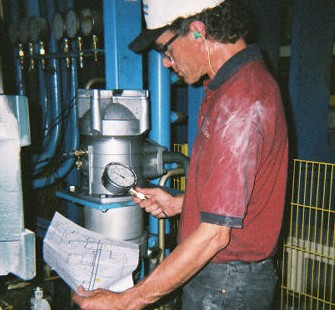
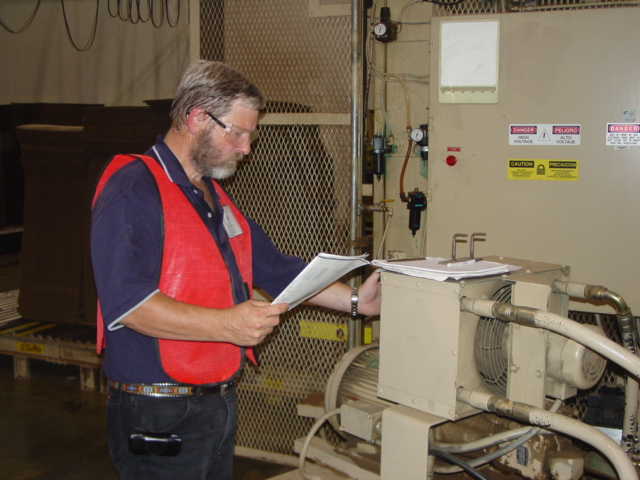
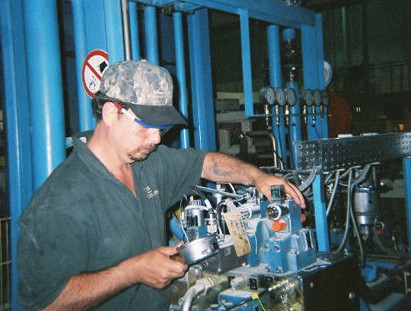
Nothing is more expensive than unscheduled down time. GPM’s customers know they can call whenever they have a troubleshooting issue they simply can’t resolve. With over 50 years experience dealing with hydraulic failures, our consultants have the resources to help troubleshoot whatever hydraulic problem you encounter. Whether you’re experiencing a total system outage, repeated component failure or just need a professionally designed preventive maintenance schedule, the consultants at GPM can help. Call GPM for
In-plant Troubleshooting
Leakage Problems
Pressure Settings
Shock Problems
Preventive
Maintenance Scheduling
Hydraulic Troubleshooting Manual Development
Startup
Consulting and Recommendations
Heat
Problems
Repeated
Component Failures
Speed Problems
Do you want to learn more about how GPM can help you? Go to http://gpmhydraulic.com/troubleshooting.htm

Maintenance Basic Hydraulic Troubleshooting
2009
3 Day Workshop
Registration
Fee Only $895.00 Per Person
Three
for the Price of TWO!
Every Third Registrant Attends for FREE!
Early Registration -
$845.00 For Confirmed Reservations
Booked 21 Days Prior to the Start of the Workshop
Call (770) 267-3787 To Register
Learn More About Our Maintenance Basic Hydraulic Troubleshooting Course
2009 Maintenance Basic Hydraulic Troubleshooting Schedule
Date
(Our mobile lab will not be available for this program - display pumps and valves will be used for learning purposes)
*Don't see your city listed? Call If You Would Like To See A Workshop Scheduled In Your Area!
(770) 267-3787
If you've found our newsletter informative and beneficial please click here to tell your co-workers and friends.
A step-by-step guide for changing cylinder seals and carrying out minor repair. The manual contains disassembly, inspection of parts, minor repair, assembly, examples of seal failures and their causes, hydraulic cylinder speeds, metric/inch conversion table, fluid power formulas, rod and piston groove diameters.
$24.99 + Shipping & Handling
Site Index
[Home] [Our Training] [Hydraulic Consulting] [Safety Webinars] [System Flushing] [Our People] [Downloads and Multimedia] [Testimonials] [Hydraulics Quiz] [GPM Store] [Upcoming Events] [Contact Us]
GPM Hydraulic Consulting,
Inc.
Box 1376
Monroe, GA 30655
(770) 267-3787



